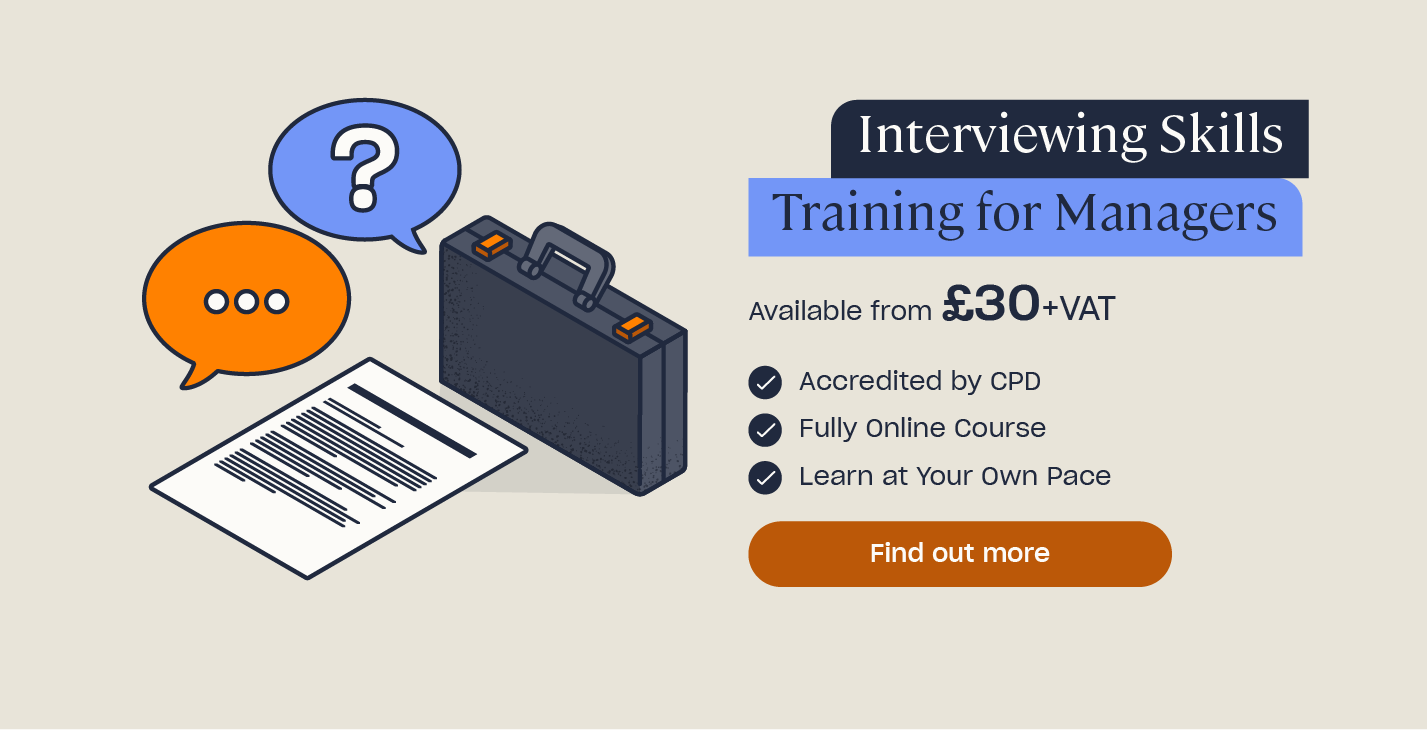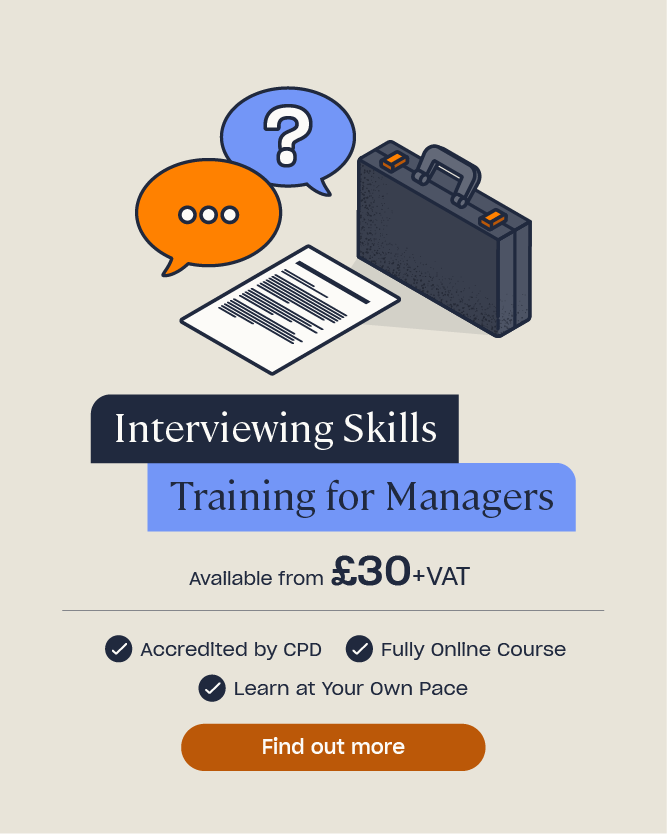Making the Right Hire: Interview Assessment Template for Employers
There are so many factors to assess when choosing the right candidate for your business, and juggling all these in your head during an interview is impractical. You need to follow more than your instincts if you want to recruit talented people and avoid the costs of a bad hire.

That’s why you should use tested selection methods and a structured interview assessment template. They help you organise your thoughts and easily review applicants.
Use the following links to jump to different sections of the article:
We’ve included an interview assessment template for you to download below. The information in this article will help you get the most out of your free template.
Selection Methods for Hiring
A structured selection process makes you feel more confident in your final choice and guarantees that you hire the right people.
According to a study by CV Library, respondents said the following were the biggest risks of a poor recruitment strategy:
- High staff turnover (44%).
- Financial loss (22%).
- Decreased productivity (16%).
- Low morale (8%).
- Poor employer branding (7%).

Interview techniques and processes help you assess a person’s skills and personality, as well as the areas they’re most intelligent in (psychologists divide intelligence into 9 different types). However, there is no one-size-fits-all approach, so you need to select a combination of methods that best suit your needs.
Below are 3 examples of selection methods that combine well.
Structured Interviews
Of all the hiring methods available, structured interviews are the most consistently effective. To assess candidates, you use tested interview questions in a structured order, which improves accuracy and fairness. You also prevent your interview process from going off on a tangent or, at worst, discriminating candidates.
Need a Course?
Our Interview Skills Training for Managers has been designed to help managers increase their confidence when hiring by detailing the recruitment process from start to finish.
A well-structured interview follows five steps:
- Introduction – start with a friendly chat to put the candidate at ease. If you have something in common or you noticed an interesting fact on their CV, talk about it. A relaxed candidate is more likely to open up and reveal their true qualities during the interview.
- Assessment – first, explain the structure of the interview so the person knows what to expect. Then, begin assessing the candidate. Refer to their CV and use suitable questions for the type of job you’re recruiting for – search online for the best picks. Make sure you write down all their answers and fill in your interview assessment template as you go.
- Discussion – tell the applicant more details about the job and discuss what skills they need to fit the position. This prompts the candidate to envision themselves in the role and how they’d apply their capabilities, which gives you an idea of whether they’re really suitable.
- Questions – invite the candidate to ask questions. If they do, they most likely did their research beforehand, meaning they’re genuinely interested in the role and have great initiative.
- Conclusion – thank the person and let them know when you’ll get in touch about the position. If you usually have second interviews, state that you may invite them back for one.

Culture Fit Tests
Company culture is the vibe that determines whether or not employees feel comfortable in their own skin and get on with others in the workplace. You need to maintain your culture if you want happy, hard-working teams.
To do so, make sure you measure a person’s personality during interviews.

Always keep in mind that skills can be taught, but you can rarely change a personality.
When Impact Recruitment asked businesses on Twitter about recruiting for skill versus attitude, 73% said they would choose attitude over skills if they had to pick one.
If you come across highly-talented people, but they possess attributes that make them unpleasant to socialise or work with, they aren’t a worthwhile investment – they’re unlikely to get on with others and adapt to change.
On the other hand, if a person lacks skills but has a positive frame of mind, determination, and a willingness to learn, they can work hard to better themselves and develop new abilities. This makes them an incredible asset.
Examples of culture fit questions include:
- What does your ideal weekend look like?
- Would you rather be liked or be right?
- Do you prefer to spend time alone or with others?
- How do you feel about becoming friends with people at work?
- Tell me about a time you tried something new, even though there was no certainty of success.
- How did you handle a difficult time in your life?
- How do you give and receive feedback, both in and out of work?
- What’s one of your pet peeves?
Presentations and Technical Tests
It’s easy to big up abilities on paper, so you may want candidates to prepare a presentation or take a technical test – or both. These help you accurately measure their skills and see how they perform under real pressure.
Presentations
Give people five to ten minutes to talk about themselves. Good candidates usually provide a good balance of work-related and personal facts, and don’t give overly rehearsed answers.

Presentations are effective because they reveal what the applicant values enough to include. For example, if they spend the whole time bragging, it may be an immediate red flag that they’re not a good culture fit or team player.
Technical tests
Make sure you set up tests that properly reflect the position and you invite candidates to a second interview to take them. Throwing candidates into a test after a potentially lengthy set of questions isn’t fair. Plus, you should first assess their answers from their initial interview to decide whether inviting them for a test is worth your time.
Free Interview Assessment Template
To get the most out of applicants’ responses, you should use an interview assessment template. It is particularly useful if you interview more than one candidate on the same day, as thoughts can muddle and overlap if you leave them unrecorded for too long.
Assessment templates help you score answers with your immediate, most accurate, unbiased thoughts.
Evaluating Interview Performance
To fully examine how well the candidate performed, use specific evaluation questions to assess the scores and notes you included on your assessment template, as well as the answers you wrote down.

Useful evaluation questions include:
- How prepared was the candidate? Did they do their research? Did answers seem rehearsed?
- What was their attitude like? Were they respectful, friendly, genuine, professional, etc.?
- Were their answers relevant? How useful and believable were their examples?
- How did they answer difficult questions? Did they do their best to respond? Did they skip any questions or give unrelated answers to try dodge them?
- Are they a good culture fit? Which answers revealed they are or aren’t?
- Did they ask good questions? What did their questions tell you about their values? Did they express real interest in the role?
- Did they show they have relevant experience and skills? How did they perform in a technical test? Did they respond to questions about the job with relevant examples?
After some interviews, you may feel like the applicant answered everything perfectly, but your gut still says no. Or, oppositely, you liked something about them but can’t quite put your finger on it.

By using these questions, you can pull apart every little detail about the candidate’s performance and figure out what made them inspire you (or put you off). With that in mind, you can hire new staff with confidence.
What to Read Next:
- How to Prepare for Your First Interview
- Interview Skills Training for Managers
- Tips for First Time Supervisors
- How to Conduct a Successful Video Interview
- Leadership and Management Quiz











